On View
‘Queen of Versailles’ Director Lauren Greenfield’s New Book Will Make You Understand the Trump Era
Now at the ICP, "Generation Wealth" documents how ideas of luxury have changed over decades.
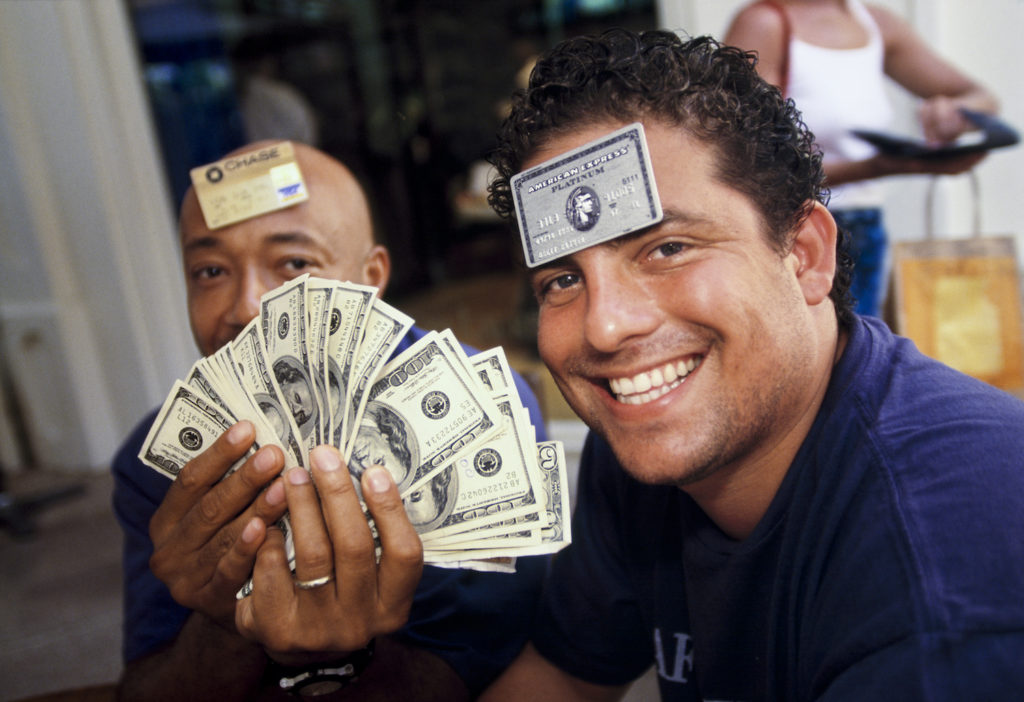
Now at the ICP, "Generation Wealth" documents how ideas of luxury have changed over decades.

Sarah Cascone

If there’s one thing that photojournalist Lauren Greenfield has learned over the last 25 years, it’s that America has an addiction problem—not to drugs, alcohol, or gambling, although those are all undeniable problems present in her work—but to wealth and its glitzy trappings of luxury, fame, beauty, and youth.
“Generation Wealth,” her current exhibition at New York’s International Center of Photography (organized by the Annenberg Space for Photography in Los Angeles), is a searing critique of our society’s collective obsession with the pursuit of wealth, a selection of striking images paired with insightful interviews with their subjects.
“The American dream has been corrupted from the values of hard work, frugality, thrift, and digression, to this culture of bling and narcissism and celebrity,” Greenfield told artnet News during a preview of the show. By trade a documentary photographer and filmmaker, Greenfield is, by virtue of her work, also an economist, sociologist, and artist all rolled into one.
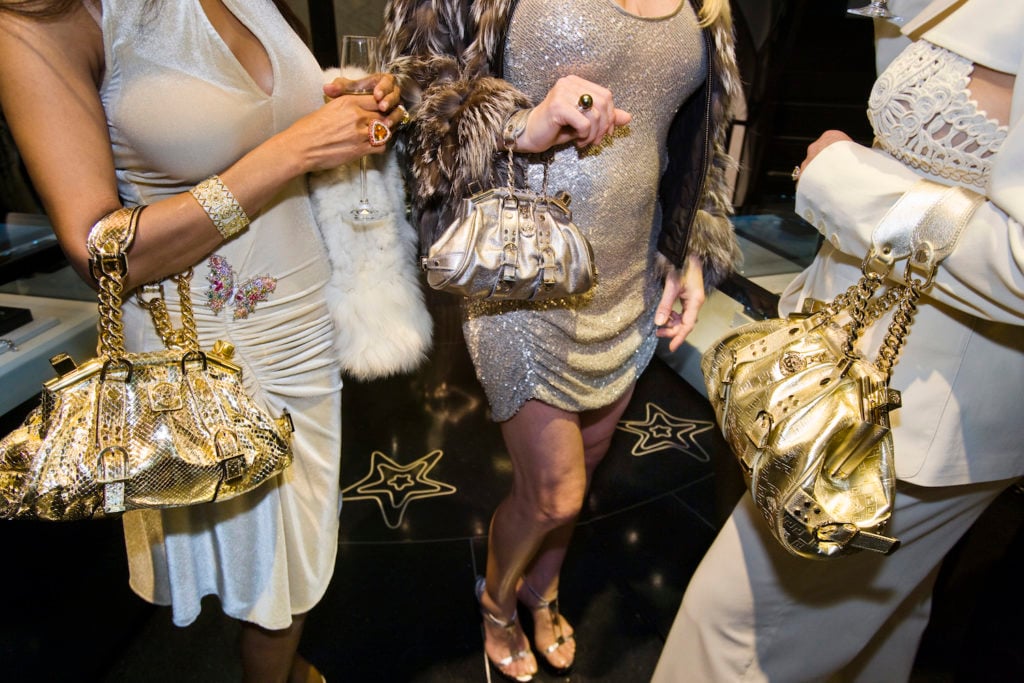
Jackie and friends with Versace handbags at a private opening at the Versace store, Beverly Hills, California, 2007. © Lauren Greenfield.
After graduating college in the early ’90s, Greenfield, inspired in part by Brett Easton Ellis’s Less Than Zero, returned to her native Los Angeles, and began capturing the lives of teenagers, pushed to grow up fast while their parents sought eternal youth. What she found was a growing focus on materialism, celebrity, and image that would soon come to dominate her work.
“Those things kind of blew up over the next 25 years,” she said, noting that the same themes kept reoccurring in her photographs, whether she was shooting money- and image-obsessed LA teens, trophy wives at a Versace boutique, or upper-middle-class families building over-the-top dream homes.
At the time of the 2008 financial crash, “I realized all of these stories were connected, and had kind of turned into a morality tale,” Greenfield added. “Unwittingly, I had been documenting this evolution.” In her exhibition, she dares to ask what the continued rise of materialism, and our collective obsession with wealth, is doing to us as a society.
Greenfield documented the fall out from the financial crisis both at home and abroad, capturing the abandoned houses and algae-filled swimming pools of Southern California as well as those struggling in Dubai, Iceland, and Ireland.
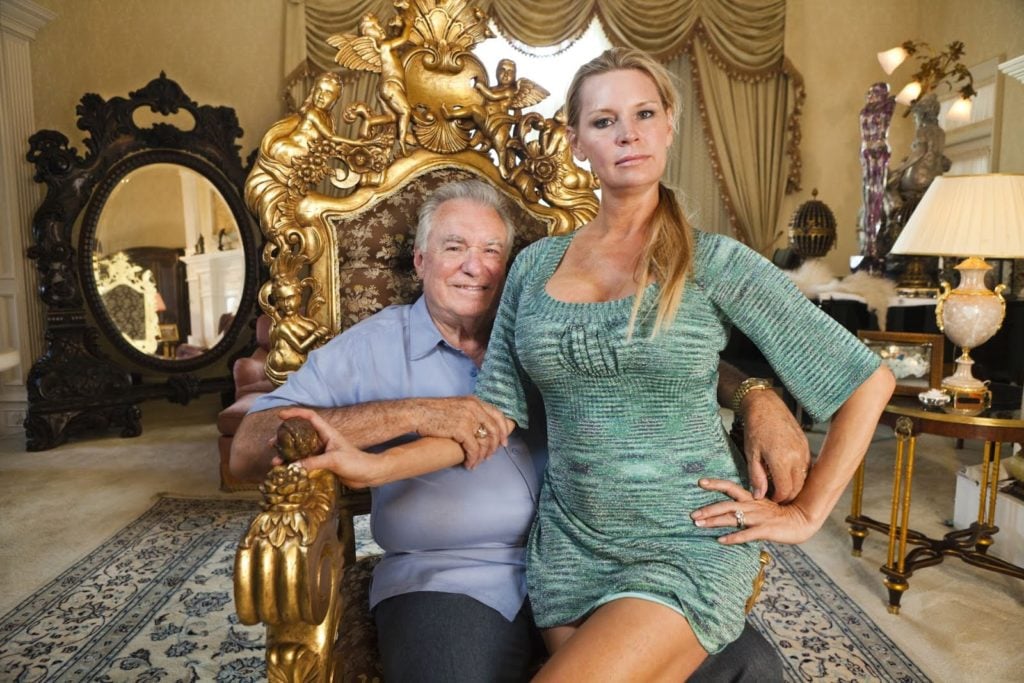
“Time-share King” David Siegel, 74, and his 43-old wife, Jackie, a former Mrs. Florida, in the master bedroom of Seagull Island, their 26,000-square-foot home on a four-acre peninsula overlooking a lake, Windermere, Florida (2009). © Lauren Greenfield.
As families across the world lost homes they should have never been able to afford, Greenfield struck on the perfect subject: timeshare king David Siegel and his wife, former beauty queen Jackie Siegel, who ran out of money while attempting to build the country’s largest private home, modeled after the Palace of Versailles.
That story became the centerpiece of Greenfield’s 2012 documentary film Queen of Versailles. Though this wannabe personal palace might seem outlandish, the exhibition juxtaposes photos of the massive property and clips from the film with images of sprawling subdivisions, each home with a private pool.
“They had the dream that everybody else had, but on steroids,” Greenfield pointed out.
She is remarkably sympathetic towards her subjects. Generation Wealth isn’t an indictment of any one person, but of the culture at large—perhaps because Greenfield too feels the pressures of materialism.

Xue Qiwen, 43, in her Shanghai apartment, decorated with furniture from her favorite brand, Versace (2005). © Lauren Greenfield.
“I’m attracted to shiny things,” she admitted. Growing up, she lived in a poor neighborhood in Los Angeles, but attended a wealthy private school. Despite her admitted privilege, Greenfield still felt lacking compared to her wealthier peers.
Some of Greenfield’s subjects speak about this very issue: the sense that, no matter how much they have, it’s never enough. “Money affects kids in many ways,” 13-year-old Adam told Greenfield in 1992, reflecting on his expensive shoes and Rolex watches. “It has ruined a lot of kids I know. It has ruined me.”
Today, almost everything we consume is meant to be binged. Where designer handbags was once considered wildly aspirational, now a hunger for mega-mansions and super-yachts is presented as considered normal. As Juliet Schor puts it in her forward to Greenfield’s new book, also titled Generation Wealth, “the ultrarich [have] run out of semi-rational things to compete over.”
These impulses aren’t confined to just the one percent: with the rise of the Internet and social media, the conspicuous consumption of the rich is all the more visible to average folk, many of whom are driven to be emulate the lives of the rich and famous—the implied challenge to do so embedded in the very name Keeping Up With the Kardashians.
(Kim Kardashian appears in two separate sections of the show, both as a young girl at a school dance, and as the reality super star she is today.)
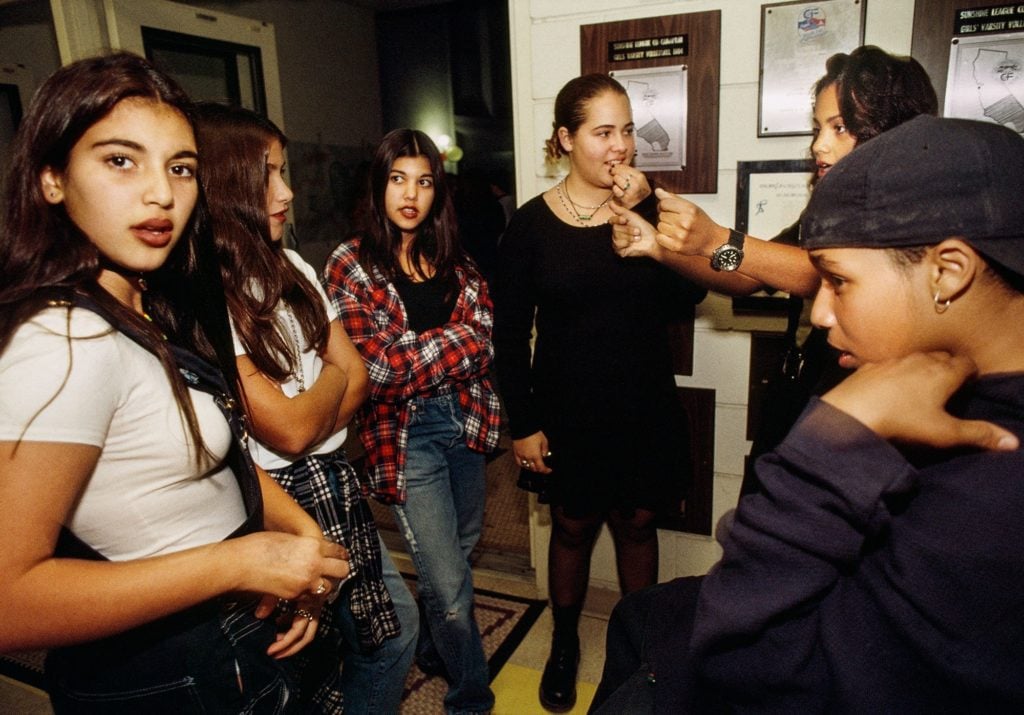
Kim Kardashian, 12, and her sister Kourtney (third from left), 13, at a school dance in Bel-Air, Los Angeles (1992). © Lauren Greenfield.
Over the course of Greenfield’s career, wealth has become increasingly concentrated in the top one percent of society, leading to ever more unrealistic desires for lavish lifestyles even as there is less and less social mobility. Instead, many settle for the appearance of wealth, the fake-it-’til-you-make-it approach.
There’s the high school student who scrimps and save for years for a lavish prom night, the single mom who travels to Brazil for cut-rate plastic surgery on her butt and breasts, and the Walmart pharmacy technician who insists on a literal Cinderella wedding at Disney World, horse-drawn carriage and all.
The scary thing is that no matter how excessive some of these actions may seem, the show is still utterly relatable. Greenfield is teasing out undeniable, albeit disturbing truths about contemporary society.
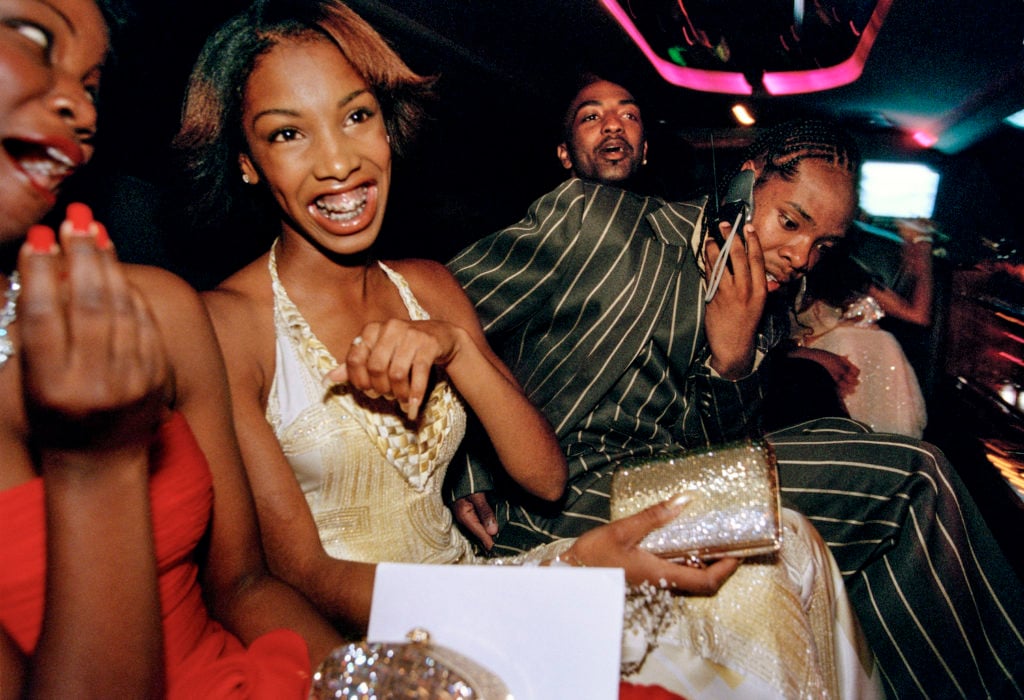
Crenshaw High School girls selected by a magazine to receive “Oscar treatment” for a prom photo shoot take a limo to the event with their dates, Culver City, California (2001). © Lauren Greenfield.
The subject matter is also striking because documentary photographers, as Greenfield pointed out in her book, often shoot exotic cultures, or the poor and downtrodden, while the wealthy commission portraits and appear on society pages. She is taking us behind the curtain.
Though “Generation Wealth” spans the past 25 years, it feels very timely, especially in light of the election of Donald Trump. While Greenfield never photographed the real estate magnate and reality star-turned world leader, he is very much a part of the story she is trying to tell. “I do feel like he is in the book,” she said.
“Trump’s glittering towers are golder, gaudier, and taller than anyone else’s… His appeal to a significant portion of the population,” wrote Schor, is “reflective of the spread of the culture of materialism, greed, and excess.”
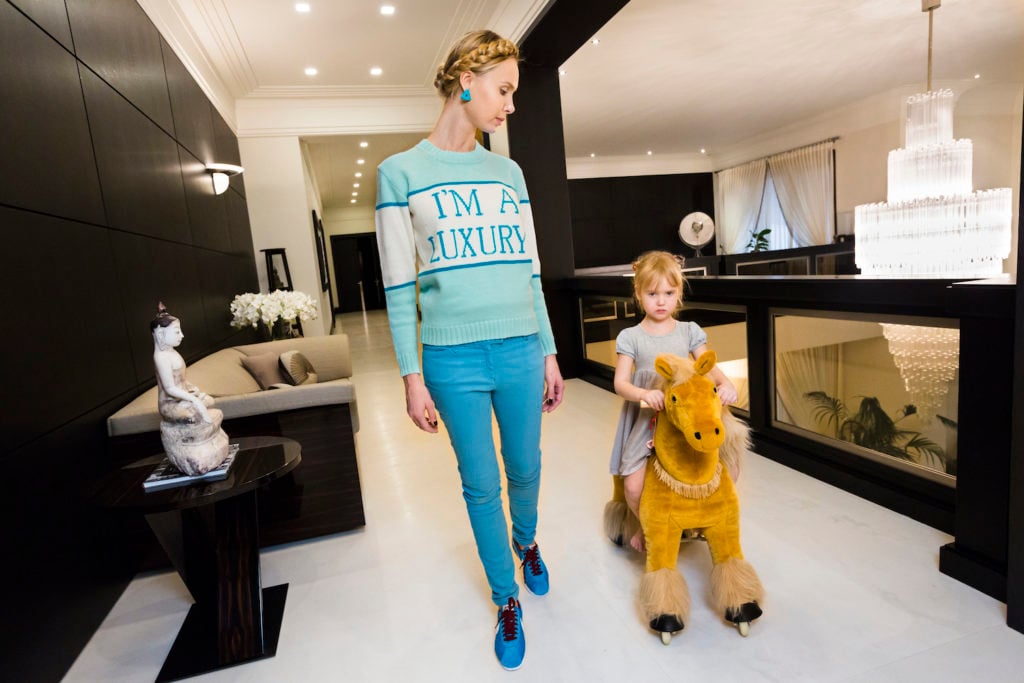
Ilona, a photographer and former model originally from Latvia, in the mezzanine library of her home, which so far contains only copies of a self-published book of her fashion photographs, Moscow (2012). © Lauren Greenfield.
There are moments of hope, of course: the investment banker obsessed with his somehow-inadequate bonus who quits to do charity work; financially-ravaged Iceland, which embraces anew the traditional pastime of knitting; and even, in his way, Florian Homm, the former hedge fund manager who went to jail on fraud charges and bemoans wasting his life in the pursuit of wealth.
“All of us are following a dream, a toxic dream. It’s not going to fulfill us,” he told Greenfield. “It isn’t as important as relationships, as love.”
“Generation Wealth by Lauren Greenfield” is on view at the International Center of Photography, 250 Bowery, New York, September 20, 2017–January 07, 2018.